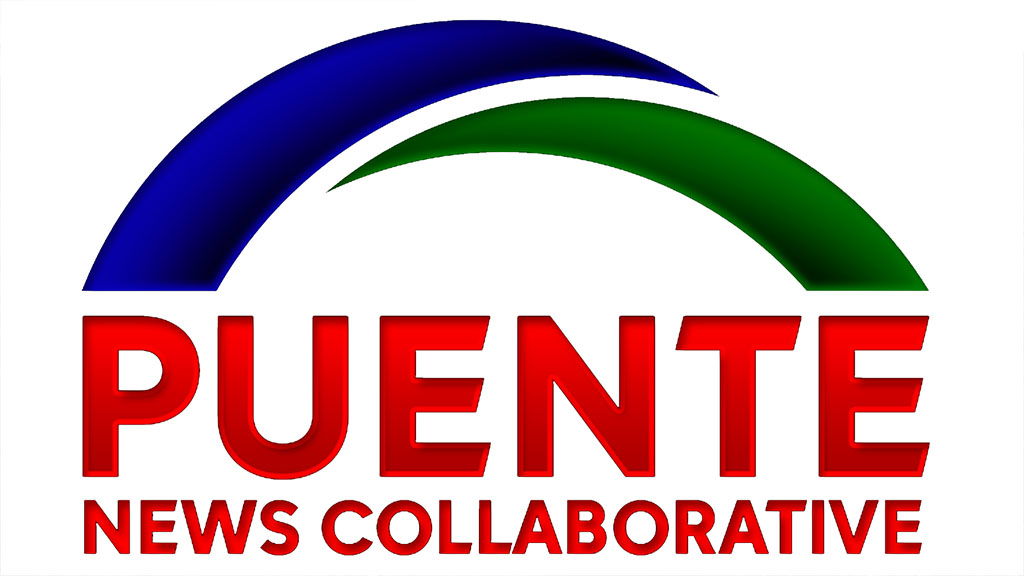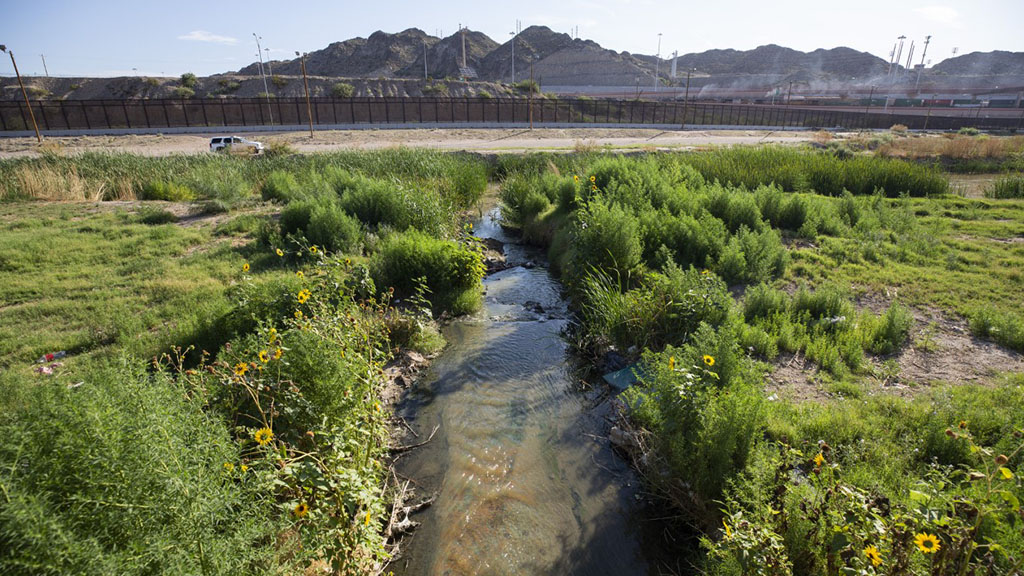Editor’s note: This story comes from the El Paso Times as part of the Puente News Collaborative, a group of newsrooms — including ABC-7, which explores issues with a bi-national perspective. Story by Martha Pskowski.
Juárez activists are calling on Mexican authorities to stop the flow of untreated wastewater entering the Rio Grande downstream of the American Dam.
While El Paso Water’s wastewater discharge into the Rio Grande ended in January, environmental groups warn that sewage is still threatening the river ecosystem and public health. El Paso Times reporters observed untreated wastewater entering the river from several drains in the Ladrillera neighborhood.
Junta Municipal de Agua y Saneamiento de Ciudad Juárez (JMAS, Municipal Water and Sanitary Board of Juárez) spokesperson Daniel Valles said sewer main replacements will eventually stop the flow but in the meantime residents can help prevent sewer blockages by, for example, not pouring or flushing food or fat down the drain.
The North American Development Bank (NADBank) granted $11.5 million to JMAS to replace four large sewer mains in northwest Juárez that have deteriorated, contributing to sewage blockages. Valles said maintenance teams visit the area every three weeks to reduce the amount of sewage accumulating at street level and entering the river.
But advocates say JMAS must do more and have lodged formal complaints with Mexico’s federal environmental prosecutor.
“This doesn’t just affect the river’s health, it affects the health of the local population,” said Jeannette Terrazas, a Juárez artist and member of the Defensa del Río Bravo collective. “It’s negligence.”
JMAS maintenance reduces sewage flows, but permanent fix will take time
On the morning of July 12, a steady flow of raw wastewater entered the Rio Grande from three drains on the edge of the Ladrillera neighborhood. The smell of sewage permeated the air across the street from cinderblock houses, as dogs roamed the dirt road.
Raw sewage contains bacteria and viruses that can cause diseases including cholera, giardiasis and hepatitis A. Untreated sewage also can contaminate groundwater, which Juárez and El Paso rely on for human consumption.
Raw sewage mixes with water, is diverted
The raw sewage entering the Rio Grande mixed with water flowing from the American Dam, where in early June the U.S. released Mexico’s share of irrigation water for the season. Downstream, this water is diverted at another set of floodgates, known as las compuertas, to Juárez’s canal system via the Acequia Madre canal.
El Paso’s irrigation water is transported through a separate canal system and the El Paso County Water Improvement District No. 1 has not reported contamination.
Jesús Luévano, the secretary of Mexico’s Comisión Internacional de Límites y Agua (CILA), estimated the volume of raw sewage entering the river from Juárez has been between .05 and .15 cubic meters per second for at least the past two years. In comments to El Diario in October 2021, he said the total amount is greater than from El Paso Water’s sewage discharge in 2021. At the time, he referred questions from the El Paso Times to CILA’s U.S. counterpart, the International Boundary and Water Commission (IBWC).
“To solution is to repair or rehabilitate the collection system,” IBWC press officer Lori Kuczmanski said in an email. “USIBWC continues to see overflows in the system when there are blockages due to silt and debris entering the collectors. It is a recurring problem that will hopefully be resolved with these repairs.”
She said IBWC has reported the problem to CILA, in order for JMAS to take action.

JMAS’s Valles said sewage has entered the Rio Grande for at least 10 years in the Anapra area due to neglect and the neighborhood’s sloping topography. Points where raw wastewater should enter the sewer system are often clogged and the sewage instead runs into the street, then drains into the river.
“Every discharge that goes to the river is because of that, not because JMAS is deliberately setting things up so it will go to the river,” Valles said.
Valles attributed the blockages to people pouring grease or fat into their sinks and toilets, as well as dirt, trash and other debris entering sewers. Thieves often steal manhole covers to sell the iron for scrap, allowing stormwater runoff and debris to enter the sewers, further clogging the system.
JMAS is a dependency of the statewide Junta Central de Agua y Saneamiento. Sergio Nevárez was appointed as JMAS director by Gov. María Eugenia Campos Galván in October 2021
“For the past 10 years, (maintenance) hasn’t been happening as it should,” Valles said. “Not anymore. JMAS has a new maintenance plan and has been doing maintenance to all those containers.”
Maintenance crews are now vacuum-cleaning the sewers in the affected area every three weeks to facilitate the flow of sewage to the wastewater treatment plant. But a permanent fix will require replacing the sewer lines in northwest Juárez, which have exceeded their useful lifetime.
“Everyone knows it’s happening,” Valles said. “The point is we need to change those containers.”
Development bank funds sewer main replacement project
In June the North American Development Bank’s (NADBank) Border Environmental Infrastructure Fund granted JMAS $11.5 million to replace four large sewer mains in northwest Juárez. NADBank also was authorized to loan up to $15.4 million for the project, which has a total price tag of $26.4 million.
The Environmental Protection Agency funds NADBank’s Border Environmental Infrastructure Fund and requires the Mexican government to match the grant dollar for dollar. The proposed loan would be a contingency funding source, “in the event that the funding anticipated from Mexican federal, state or local sources is not available,” according to the NADBank project document.
The Nadadores and Norzagaray sewer mains, which run near the river and international border, will be replaced, as well as El Mimbre and Las Viboras mains. The project will benefit neighborhoods including Felipe Angeles, Francisco Villa, Paso del Norte and Ladrillera.
If the sewer mains fail completely, up to 22.8 million gallons per day of untreated wastewater could enter the Rio Grande, according to an external consultant who worked with JMAS to develop the project proposal. When the Frontera Force Main failed on El Paso’s West Side in August 2021, up to 10 million gallons of untreated wastewater entered the river daily until early January.
“If we have a severe rainfall as we are expecting in the next couple years, that area could just be blown away,” Valles said. “Huge amounts of dirt and gravel can get into our sewers.”
Valles said JMAS is waiting for the state Congress to approve the loan request to move forward on the project. The proposal to NADBank projected a five-year timeline for construction on the four sewer mains. Valles said until the sewer mains are replaced, routine maintenance can reduce, but not eliminate, the flow of raw sewage in city streets and into the river.
“The calendar may have slipped a few months, but we expect to begin construction in the fourth quarter of this year,” said NADBank public affairs director Jesse Hereford.
Advocates say authorities must do more
Officials acknowledge sewage has entered the river in Juárez for years. But increased public outcry this year has brought more attention to the issue.
Jeannette Terrazas of Defensa del Rio Bravo said authorities have looked the other way for too long.
“If this were happening in Campos Elíseos, it would have been resolved a long time ago,” she said, referring to a wealthy neighborhood in eastern Juárez. “But because it’s in a marginalized part of the city, they don’t care about the impact on people.”

CILA has shared information with the Defensa del Rio Bravo collective about its actions to address the sewage discharge.
“In the report CILA sent us, it says they have taken actions to resolve the problems,” Defensa del Rio Bravo said in a statement. “But this has gone on for more than five years and nothing has been fixed. To the contrary, it’s only getting worse.”
Damian López filed a complaint with PROFEPA, Mexico’s environmental federal prosecutor, on behalf of the Defensa del Rio Bravo collective in February.
In a written statement, PROFEPA said inspectors from their Chihuahua office visited the river on April 12 and 13 and documented violations of environmental regulations. PROPEFA notified CILA and the local office of the National Water Commission (CONAGUA). PROFEPA’s investigation is ongoing and any potential financial or administrative penalties will be determined once the investigation is complete.
The collective also opened a complaint with the state Human Rights Commission, alleging JMAS is violating the human right to a safe and healthy environment. State Congresswoman María Antonieta Pérez Reyes, of the Morena party, has also called on JMAS to address the discharge.
Terrazas said the collective is calling attention to pollution and other factors that have degraded the river.
“We want the health of the river to be protected,” she said. “More people are informing themselves about water issues and it’s becoming part of public discussion.”
Staff writer Martha Pskowski may be reached at mpskowski@elpasotimes.com and @psskow on Twitter.


